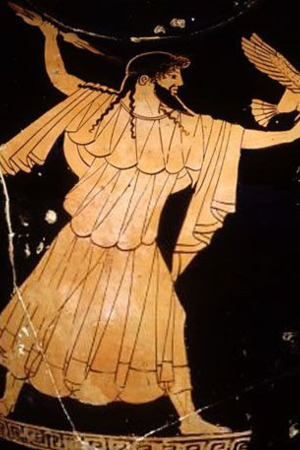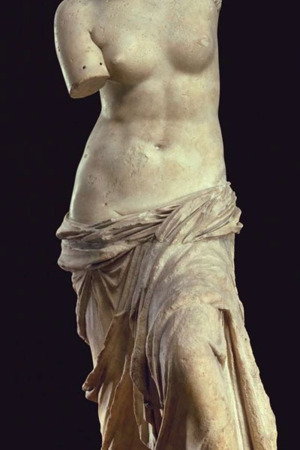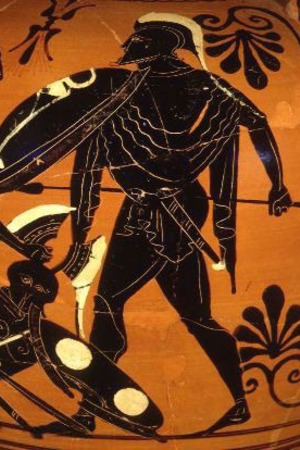Greek mythology
Greek mythology is a collection of myths and legends that originated in ancient Greece. These tales, passed down from generation to generation, explained the origin of the world, the nature of gods and heroes, and the place of man in the universe. Greek myths have had a huge impact on Western culture, becoming the basis for literature, art, philosophy, and even psychology.
Greek mythology has evolved over the centuries, incorporating elements of Minoan, Mycenaean, and other Mediterranean cultures. The main written sources are:
1. Epic poems (VIII-VII centuries BC)
Homer – The Iliad (about the Trojan War) and the Odyssey (about the wanderings of Odysseus). Hesiod – "Theogony" (the origin of the gods) and " Works and Days "( the myths of Prometheus and Pandora).
2. Tragedies and Comedies (5th century BC)
Aeschylus, Sophocles, Euripides-wrote plays on mythological subjects ("Oedipus Rex", "Medea", "Oresteia"). Aristophanes – comedies with references to myths ("Frogs", "Birds").
3. Late ancient authors
Apollodorus – "Library" (a collection of Greek myths). Ovid (Roman poet – - " Metamorphoses "( myths about transformations). Pausanias - " Description of Hellas "(myths and cults in Greek cities).
Pantheon of the Gods
According to Hesiod's Theogony, the world emerged from Chaos.
Then there were:
1. Uranus (Sky) and Gaia (Earth) are the first deities.
2. The Titans are their children, including Kronos (time) and Rhea.
3. Olympian gods-descendants of Cronus, who overthrew the Titans in the Titanomachy.
4. Lesser gods and heroes.
After the Titanomachy (the battle between gods and titans), the gods began to play a dominant role in the world order. According to myths, the main Olympians living on Mount Olympus were 12. In addition to them, two more are added to the most influential ones - Hades (god of the realm of the dead) and Hestia (goddess of the hearth). In addition to the gods listed below, there are many lesser gods and their other non-divine descendants-heroes, monsters, and other creatures.
The following are the main Greek gods (the central figures of mythology), who control the world and the destinies of people, as well as their areas of responsibility and symbols:
| *=God=* | *=Sphere Of Influence=* | *=Symbols=* |
|---|---|---|
|
Zeus |
King of the gods, thunder and lightning |
Eagle, lightning, scepter |
|
Hera |
Marriage and family |
Peacock, pomegranate |
|
Poseidon |
The sea and earthquakes |
Trident, horse |
|
Demeter |
Harvest and farming |
Ears of corn, torch |
|
Athena |
Wisdom and War |
Owl, Helmet, Aegis |
|
Apollonian |
Sun, music, prophecies |
Lyre, laurel wreath |
|
Artemis |
Hunting and the moon |
Onion, fallow deer |
|
Ares |
War |
Spear, helmet |
|
Aphrodite |
Love and beauty |
Pigeon, mirror |
|
Hephaestus |
Blacksmithing |
Hammer and anvil |
|
Hermes |
Trading and Trickery |
Winged sandals, caduceus |
|
Dionysius |
Wine and pleasure |
Grapes, thyrsus |
|
Hades |
Death, the realm of the dead |
Kern, aries, cypress |
|
Hestia |
Home, family |
Fire, circle, torch |
Heroes
The heroes of Greek mythology are demigods (children of gods and mortals) or prominent mortals whose exploits and tragedies became the basis of legends. They fought monsters, defied the gods, and embodied the ideals of valor, cunning, and sacrifice. They often embodied a set of vivid human qualities-both positive and negative.
Here are some examples of the most prominent heroes and their deeds:
Hercules: Superhuman strength and human suffering
When Hercules looked in despair at the bodies of his wife and children, killed by his own hands in a fit of madness, the world around him ceased to exist. At that moment, not just a hero was born - a legend was born. His twelve exploits were not only a test of strength, but also a path of redemption. Each of them is a story of overcoming: when he held the firmament on his shoulders instead of Atlas, when he cleaned the Augean stables, turned the rivers back, when he descended into the kingdom of Hades to bring Cerberus. At the end of his journey, surrounded by the flames of a funeral pyre on Mount Ete, he did not cry out in pain - he laughed, knowing that he had finally earned a place among the gods. His story teaches us that even the greatest strength is worthless without wisdom and humility.
Theseus: Shadow of the Minotaur and the Burden of Power
The silence of the maze weighed more heavily on Theseus than the darkness. Step by step, unwinding the thread of Ariadne - the thread of fate given to him by the princess in love - he went towards his destiny. A sword strike, a Minotaur scream, and ... silence. But the real battle was waiting for him later - a battle with himself. When he became king of Athens, he forgot to whom he owed his victory. Abandoned Ariadne, betrayed allies, unjust laws - step by step, he was transformed from a liberator to a tyrant. His attempt to kidnap Persephone from Hades wasn't a feat - it was a gesture of desperation for a lost man. Chained to the rock of eternity, he was forever a warning: power corrupts even the noblest.
Odyssey: The Price of Returning Home
Ten years of war and ten years of wandering-Odysseus ' whole life became a road home. As his ship sailed past the sirens, he had himself tied to the mast, hearing them sing through the wax in the crew's ears. In that moment, he realized the main thing: true strength is not in resisting temptation, but in admitting your weakness in front of it. His meeting with Penelope after twenty years of separation is one of the most touching moments in ancient literature. "Move the bed, maid," she said, knowing that only the real Odysseus remembered that their bed was carved from living wood and could not be moved. This is the whole point of his story: sometimes to prove the truth, you need not a loud word, but knowledge that is accessible only to loving hearts.
Achilles: The choice between fame and life
"I give you a choice," Thetis said to her son. "A long life in obscurity or eternal glory and an early death." Achilles chose glory. His anger over Briseis, his grief for Patroclus, his duel with Hector - all these are steps to immortality. When Paris's arrow hit him in the heel, he didn't curse his fate. He knew that his name would be remembered when the names of kings and conquerors were erased from memory. His armor became a symbol of the enduring value of true heroism. The story of Achilles is an eternal question: which is more important - to live a long life or to leave a mark on eternity?
Perseus: Flight over Destiny
When Perseus lifted Medusa's head, looking only at the reflection on his shield, he accomplished more than just a feat - he changed the very nature of heroism. His story is a hymn to human ingenuity. Winged sandals, invisibility cap, sword of the gods-he used each gift wisely. Saving Andromeda, turning Atlas into a stone mountain, accidentally creating corals from Medusa's blood - his life was a chain of miraculous transformations. Unlike other heroes, Perseus did not just win - he wisely managed his victory, becoming a just ruler and the founder of a great dynasty.
Monsters
Greek mythology is populated not only by gods and heroes, but also by monsters who embodied the primal fears of humanity. These creatures — creatures of the gods, curses, or creatures of Chaos - became tests for heroes and symbols of the irresistible forces of nature.
The Minotaur Born from the union of Queen Pasiphae and the sacred bull Poseidon. A creature with the body of a man and the head of a bull, who lived in a Maze in Crete. Every 9 years, the Athenians sent 7 boys and 7 girls to be eaten by the monster until Theseus killed it.
The Lernaean Hydra Daughter of Typhon and Echidna, sister of Cerberus. A multi-headed snake (usually 9 heads), which has two new ones growing in place of the severed one. Hercules killed her in the second feat — he cauterized the hydra's necks to prevent their heads from growing back. Her poison was used by Hercules for poisoned arrows.
The Chimera Spawn of Echidna and Typhon. The body of a lion, the head of a goat on its back, the tail of a snake and spewing flames. Killed by Bellerophon, who hit her from the air on Pegasus.
Scylla and Charybdis Scylla — a six-headed monster that snatched sailors from ships. Charybdis — a giant whirlpool that absorbed water three times a day. Odysseus lost some of his crew swimming between them. From her came a popular expression-a choice between two threats ("between Scylla and Charybdis").
Hell hound Three-headed dog, son of Echidna and Typhon. The guardian of the entrance to Hades, who did not allow the dead to return. Hercules brought it to the surface as part of the 12th feat. In some versions, it has 50 heads or a snake's tail.
The Gorgons Most famous: Medusa (the only mortal of the three sisters). She had the appearance of a woman with snakes instead of hair, her gaze turned to stone. Killed by Perseus with a mirror shield. From her blood, a Pegasus was born.
Sirens Half-birds, half-women, who lured sailors to the rocks with their sweet singing. Odysseus covered the crew's ears with wax, and tied himself to the mast to hear them.
The Sphinx Daughter of an Echidna or Chimera. Description: Lion's body, woman's head, eagle's wings. She asked riddles to travelers near Thebes ("Who walks on four legs in the morning, two in the afternoon, and three in the evening?"). Killed by Oedipus, who solved the riddle.
Python A dragon born of Gaia guarded the Oracle of Delphi. Killed by Apollo, who founded his temple on his bones.
Ladon The hundred-headed dragon that guarded the golden apples of the Hesperides. Killed by Hercules (11th feat).
Empusa (ἜΜπουσα) This vampire-like demon served the goddess Hecate in various guises. Most often, she was a beautiful girl with a bronze leg (the second is a donkey's) or a terrible creature with a fiery face. Empusa crept up on the sleepers, sucking their blood and devouring their flesh. She especially liked to hunt travelers who got lost in the night. The philosopher Aristophanes wrote that it could only be scared off by rude abuse – a strange but effective method of protection.
Lamia (Λάμια) Once a beautiful queen, beloved of Zeus, Lamia was turned into a monster by Hera's jealousy and lost all her children. In desperation, she began to kidnap and devour strangers. Her eyes were torn out, but she could take them off and put them on. Over time, the Lamia became a symbol of children's night terrors. It was described as a creature with a snake's body and a female head, capable of changing shape.
Talos(τάλως – - This giant bronze automaton was created by Hephaestus to protect Crete: it had a single vein with the divine ichor (blood of the gods) that ran through its entire body. Three times a day, he ran around the island and threw rocks at the approaching ships. He was destroyed by Medea, who either pulled out the nail that covered his vein.
Stymphalian birds (Στυμφαλίδες ὄρνιθες) These deadly creatures lived near Lake Stymphal. Their feathers were bronze, razor-sharp, and they could shoot like arrows. They ate human flesh. Hercules (6th feat) killed them using the rattles of Hephaestus – a deafening sound caused the birds to fly up, after which the hero shot them with a bow.
Campe (Κάμπη) This monster guarded the cyclops and hecatonchires imprisoned in Tartarus. It had the body of a dragon, the head and upper body of a woman, huge scorpion claws, snake body rings with venomous heads. She was killed by Zeus when he was freeing the cyclopes before the war with the Titans.
Onocentaur (Ὀνοκένταυρος) A hybrid creature less well known than the classic centaurs: half-human, half-human. He represented stupidity and animal instincts
Lerney shell A little-known but curious monster: A giant freshwater shell. It lived in the same swamp as the hydra. It drew travelers into its doors. She was killed by Hercules in parallel with Hydra.
The Crommion Pig (σῦς ΚρομμυώΝ) A ferocious boar that terrorized the vicinity of Corinth. Not an ordinary boar, but a creature of Typhon and Echidna. The size of a small house. It destroyed crops and people. She was killed by Theseus on her way to Athens
Orf (Ὄρθρος) Two-headed dog, brother of Cerberus. It belonged to the giant Geryon, and guarded his red bulls. He was killed by Hercules during the 10th feat. In some versions – the father of the Sphinx.
Keto (κῆτος) A gigantic sea creature. It was sent by Poseidon to ravage Ethiopia and was supposed to eat Andromeda. Killed by Perseus, who showed him the head of Medusa





